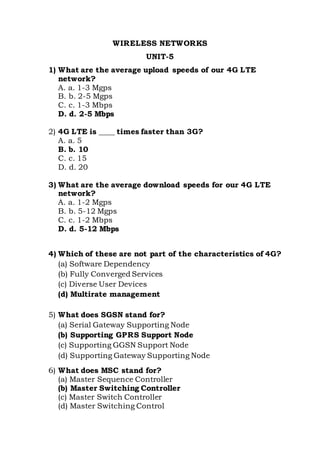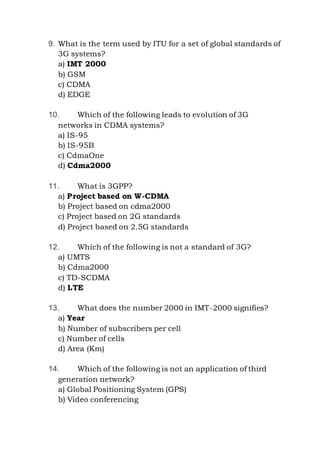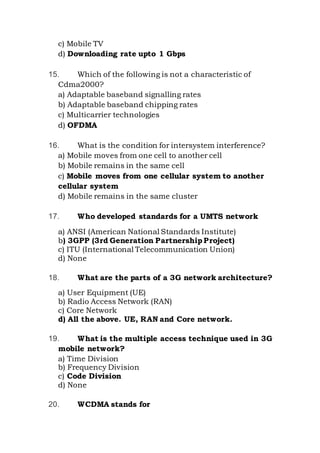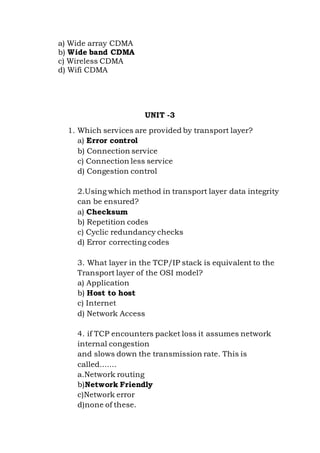This document contains a 20 question quiz about wireless networks and 4G LTE. It covers topics like average upload/download speeds of 4G LTE networks, how 4G LTE compares to 3G, characteristics of 4G, acronyms related to wireless networks, expected data rates of 4G, and applications that use Bluetooth. It also contains a 20 question quiz on wireless local area networks, characteristics of HSDPA, features of cellular networks, standards related to 3G networks, and applications of 3G mobile networks.

















